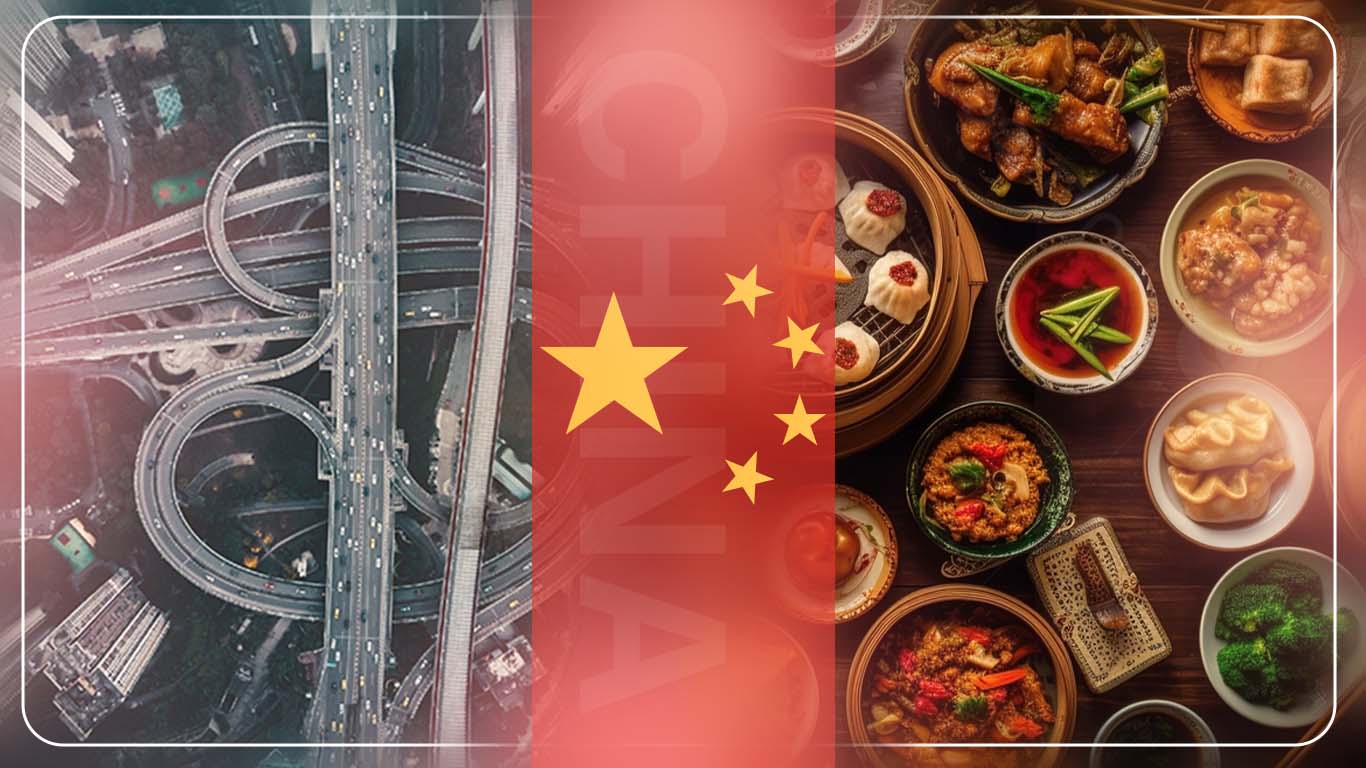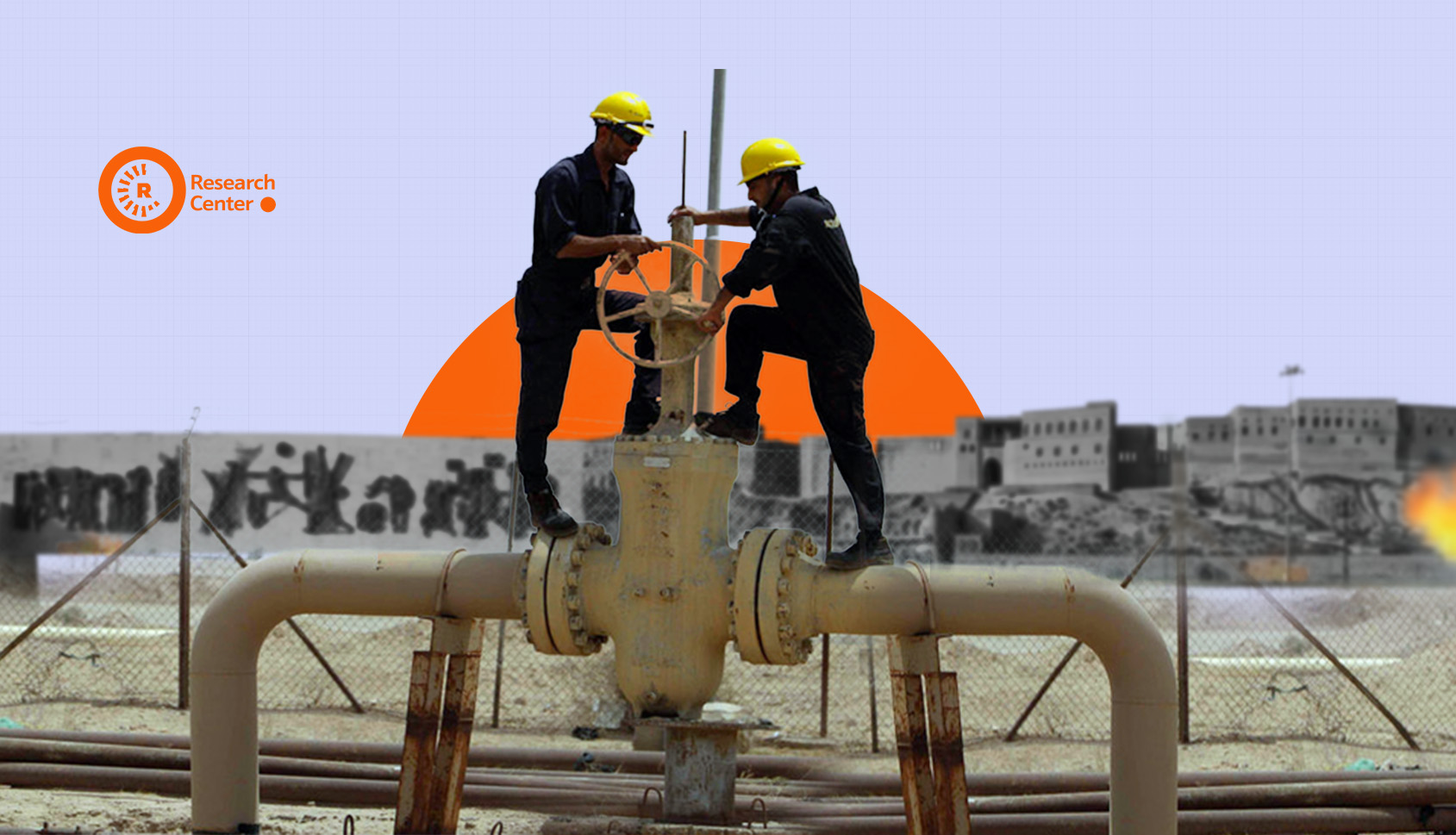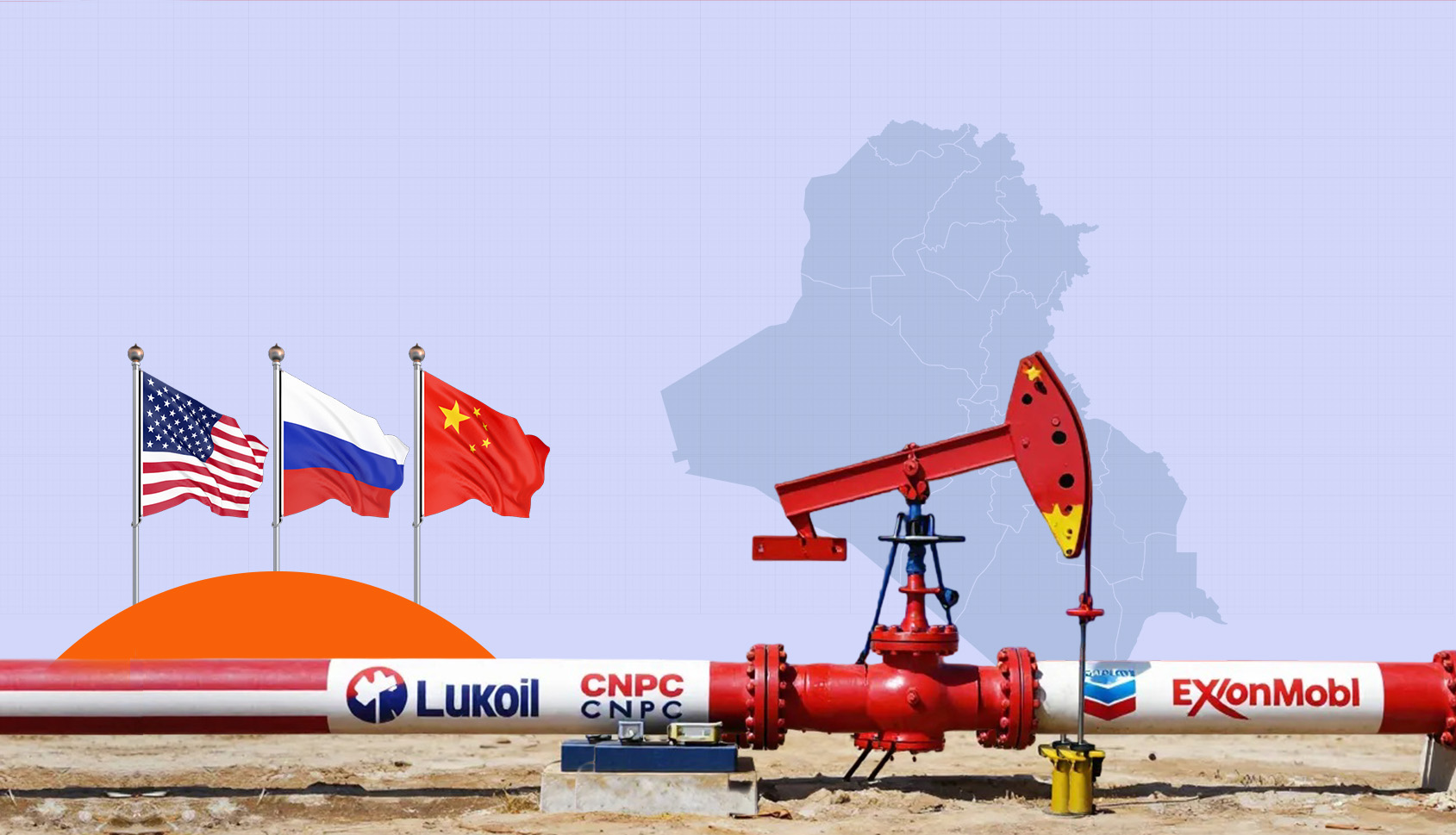There is a saying in Islamic literature: "Seek knowledge, even if it is in China." While this highlights the value of knowledge, it also speaks to China’s historical distance from the Middle East. Ancient China once seemed far away, but today, modern China is closer than ever, and its path has been significantly shortened. In fact, today, roads hold immense significance in China's geopolitics, domestically and externally, much like a Chinese pot of food—diverse, multicolored, and containing a bit of everything.
In 1972, one of the symbolic dimensions of US President Richard Nixon's historic visit to Beijing was Chinese food. Nixon impressed his hosts with his skillful use of chopsticks. Across the world, people seek easy ways to eat—some use spoons and forks, while others, who lack patience, roll up their sleeves and eat with their hands. The Chinese, however, have chosen a more intricate method; balancing grains of rice with two long sticks requires patience and precision. This complexity extends beyond just food. For instance, in Chinese script, even writing simple letters like Z, M, or W involves multiple lines and intricate shapes in order to convey your intention. Generally, the Chinese are known for their hard work and attention to detail, but I want to highlight their politics and geopolitical outlook, which, much like their cuisine, is layered, complex, and meticulously crafted.
In ancient Chinese philosophy, the phrases "yīn" and "yáng" explain the fundamental rotation of the wheel of the universe. Accordingly, everything in existence derives its meaning from its opposite, and these forces are in a constant state of change and interplay. This philosophy of opposition and harmony extends even to Chinese cuisine. In cooking, some ingredients are believed to have a "cold" nature, while others are "hot," and they must be balanced. It’s common to find dishes that are both sour and sweet, or spicy and sweet, reflecting this blend of opposites.
This unity of duality applies not only to Chinese food but also to its politics. While China defines itself as a socialist country, the more it embraces socialist principles, the more it exhibits characteristics of its opposite—capitalist socialism.
At one point in history, at least 35 million people died from hunger and overwork due to China's socialist policies under the Mao Zedong regime (Dikötter, 2011). In time, Chinese leaders recognized that pure socialism was too "hot," and they needed to add a "cool" element of capitalism to the pot, or risk burning their mouths out. Today, the presence of countless restaurants on every corner in cities like Beijing may symbolize not only cultural vibrancy but also the economic growth that has resulted from this blend of socialism and capitalism.
China is a vast country on the far side of the world. With over (1.41 billion), one billion four hundred ten million people, it has the second-largest population after India. More than a billion of its people live in the eastern region, along the brink of the Yellow and South China Sea, where the climate is ideal for agriculture, trade, and industry, and most of the country's key economic hubs are located. Moving from the northeast to the west and southwest, the harsh Gobi Desert stretches 1,500 kilometers long and 800 kilometers wide, followed by the Taklamakan Desert in Xinjiang, the eighteenth largest desert in the world, with vast dunes extending as far as the eye can see. As you move southwest into Tibet, the region's topography transforms, marked by a cold climate and rugged, mountainous terrain separating China from Nepal and India.
China's ethnic composition is as diverse as its topography. The eastern part of the country is dominated by the Han ethnic group, which makes up 90% of the population. In the north, especially in Inner Mongolia, the Mongols reside, while the Uyghurs, of Turkic Muslim descent, live in Xinjiang from the mouth of the west. Tibetans inhabit the southwestern. Although the western part of China is poorer and more arid than the east, it is crucial to the country’s security. The Gobi and Taklamakan Deserts serve as natural barriers to any advancing military, and the Himalayan mountain range forms a formidable wall, preventing potential movement from India's large population to the north. Notably, China and India have a long-standing border dispute.
In Beijing, I met a Nepalese official who served as the secretary of two ministries. He pointed to a map and remarked that Nepal was caught "between two big monsters." For a small country like ours, neutrality is the safest course of action. He then alluded to reports about the mistreatment of Nepalese working in Kurdistan and Iraq, where, in some cases, they weren't even allowed to communicate with their families and were treated poorly, likening it to modern-day slavery. "We want to find a solution," he said. As a Kurd, coming from an oppressed nation myself, it was deeply troubling to hear about the oppression of others in Kurdistan.
At that time, one of the Chinese hosts eagerly began the discussion by highlighting his country’s development. While democracy has long been considered essential for growth, China has not had this malady and managed to expand its economy without it. However, this broad statistic doesn't fully capture the realities of individual lives. The average annual income of a Chinese citizen is less than $13,000 (CEIC, 2024), compared to over $81,000 in the United States and more than $30,000 in South Korea. A large population provides a vast labor force, but it also increases the demand for food, security, and welfare. As Tim Marshall noted in 2016, China has 1.4 billion reasons to keep growing, or it risks facing serious problems. Furthermore, a large, unemployed, and impoverished population can become the greatest threat to any political system. In 1989, during the bloody Tiananmen Square protests, China’s GDP was $347.79 billion. By 2023, that figure had soared to $17.79 trillion (World Bank, 2024). The streets of Beijing are now lined with surveillance cameras, enhancing security but also reflecting how modern technology has enabled the Communist Party to maintain control over the country’s vast population.
The day before I returned, I visited the 21,196-kilometer Great Wall of China, originally built to defend the desert-dwelling tribes. As light rain fell and the landscape blurred into a misty scene, I couldn’t help but think that in some ways, old and new China are quite similar. In the past, they built physical walls and now, in the digital age, they’ve erected a new kind of barrier. Also, social networks are heavily restricted; for instance, if you want to use WhatsApp, you must first download a VPN, or it simply won’t work. It feels as though China has constructed a digital wall around itself. For a foreigner, this can seem odd, especially considering China is the world's factory, with vast connections across the globe. Who knows? Perhaps it’s a psycho-political issue because external threats have long been a sensitive topic for the Chinese, as their history includes invasions by Mongols, Europeans, and the Japanese. So, while China may be keen to engage with the world for economic, political, or military reasons, there is an underlying desire to remain a "closed bottle."
Roads may hold significant importance in Chinese geopolitical thinking, which is directly linked to controlling vast territories, ensuring territorial integrity, and managing its large population while fostering sustainable economic development. Historically, the construction of canals linking the Yellow and Yangtze Rivers, built by thousands of workers over centuries, not only facilitated the transportation of goods between northern and southern Han regions but also helped reduce political confrontations and conflicts between them. China has built many bridges, roads, and streets filled with flowers, weaving a network that connects the eastern and western parts of the country like a thread. In 2006, China extended its railway to the Tibetan desert, with some trains reaching speeds of 350 km per hour, shortening routes and promoting ethnic integration over time (Marshall, 2016). Moreover, the Kurdistan region faces a long-standing problem in this regard. Difficult geography and isolated areas have resulted in a lack of roads, hindering Kurdish national unity and even dialectal cohesion.
Beyond its borders, China faces numerous challenges, and not all paths are smooth. China’s geopolitical issues in the South China Sea, including the presence of the United States and its allies, the long-standing issue of the Strait of Malacca—through which a significant portion of its exports and imports pass—, and China’s need for broader access to global markets and raw materials makes the Northern Route in the Arctic Ocean coastline countries and other corridors within the "One Belt, One Road" initiative highly valuable. In this pursuit, China has strengthened relations with many countries worldwide, including those in the Middle East and Africa.
We were on our way to visit the Great Wall of China when a Gambian official from the Ministry of Foreign Affairs sat next to me. He was a tall, intelligent young man who had heard of the Kurds, and the late Barzani’s name, a name he had learned from his father, who once served as an ambassador to Iraq, Iran, and Saudi Arabia. As we talked, he pointed out that while Europeans impose many conditions when lending money to their country, the Chinese do not. He explained how a river divides the Gambia, but the Chinese have built several bridges over it, helping to unite the nation. "I understand that the Chinese assistance isn’t out of love for us," he said, "but the Europeans and Americans are no different—they all come with their own interests in mind. At least the Chinese don't impose conditions and create something we actually need." His remarks echo the sentiments of many authoritarian leaders in Africa and the Middle East who are drawn to the Chinese model of development.
A Chinese official spoke proudly of his country's principle of non-interference in the affairs of other nations, stating, "We are not like the West or the Soviets; our development model is based on peace." He elaborated on this point, while I found myself reflecting on how the Soviet Union once pushed for equality in the name of the workers of the world, and the West promoted liberalism and democracy. Now, the Chinese seek to extend their influence globally under the banner of peace and development. In reality, power always needs a façade, but once it fully matures, its true nature reveals itself. This was true of both the Soviets and the West, and it will likely be true for China as well. Alongside China's staggering GDP growth—from $1.21 trillion in 2000 to $17.79 trillion in 2023—its military spending has also surged. In 2008, China's military budget was around $80 billion, but by 2023, that figure had risen to $219 billion (IISS, 2024).
Another point was that the policy of non-intervention in a place like the Middle East is itself a kind of intervention because most of the political systems that exist have problems within themselves. Either the borders are artificial or the type of regimes are arbitrary and autocratic, so developing trade relations or unconditionally providing them with weapons and military equipment makes these regimes stronger; nevertheless, the Chinese model still has no answer to this. Here, the economy is not the basis of all events; for instance, the continuous clashes and struggles of the Kurds and the Palestinians over the past hundred years were over territory and identity, not the economy. The speaker was a gentlewoman, but her answers were not enough. Besides, she didn't speak enough English, and I knew only ” nǐ hǎo” in Chinese. So, our conversation was half-hearted. Although we didn't agree on policy, we both agreed that the Chinese dish of the day, fried duck, was delicious.
I had a friend with me on that trip, Mr. Shirwan, who turned it into a running joke that the teacher, I, recount all the stories from the Sykes-Picot Agreement to the rest to everyone I met. The reality is that the Chinese are less familiar with the Kurdish issue, so when you bring it up, they immediately ask questions, requiring you to explain the situation in detail. While China has gathered 14 organizations to unite for the Palestinian cause, they seem less willing to engage with the Kurdish issue. Although I don't have any official insights, it’s apparent they may not be particularly interested in even opening a representative office for the Kurdistan Regional Government—despite it being a recognized entity under Iraq's federal constitution—in Beijing.
Historically, the Chinese, as warm socialists, viewed the Kurdish movement through the lens of a perceived friend of "colonialism," and thus kept their distance. The Chinese now carry the coldness of capitalism and have shifted their outlook, so their attitude appears to have evolved, but it's still uncertain how much their stance on the Kurdish issue has genuinely changed.
References:
Dikötter, F. (2011) Mao's Great Famine: The History of China's Most Devastating Catastrophe, 1958-1962. New York: Bloomsbury USA.
World Bank. (2024) 'GDP (current US$) – China', The World Bank Data. Available at: https://data.worldbank.org/indicator/NY.GDP.MKTP.CD?locations=CN (Accessed: 15 October 2024).
CEIC. (2024) 'China GDP per Capita', CEIC Data. Available at: https://www.ceicdata.com/en/indicator/china/gdp-per-capita (Accessed: 15 October 2024).
Marshall, T. (2016) Prisoners of Geography: Ten Maps That Tell You Everything You Need to Know About Global Politics. London: Elliott and Thompson.
IISS,The International Institute for Strategic Studies (2024) The Military Balance 2024. London: Routledge. ISBN 978-1-032-78004-7.






